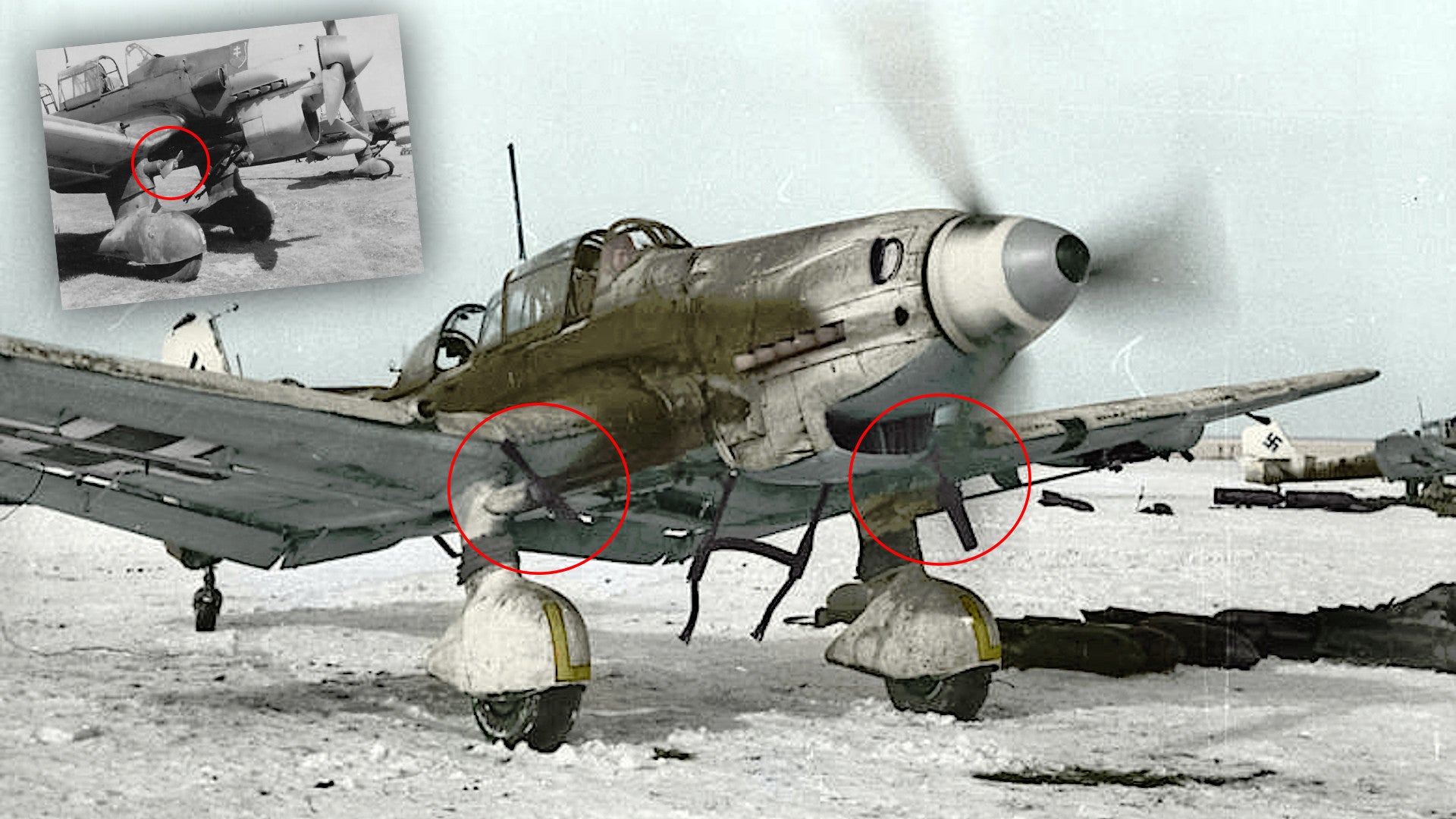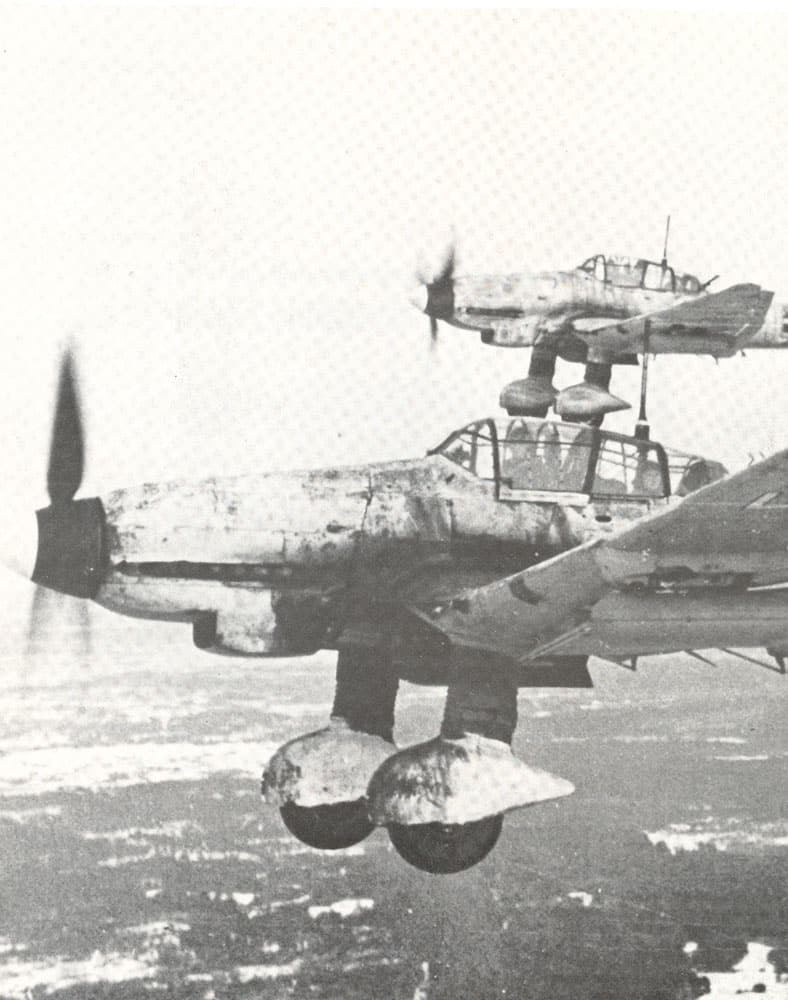German Stuka Plane - The German military this week began operations to raise World War II submarines from the seabed. The island of Rügen located in the Baltic Sea off the northern coast of Germany.
The Junkers Ju 87 "Sturzkampfbomber", or Stuka, was a fearsome weapon in the arsenal of Nazi Germany, especially at the beginning of the war when it became a symbol of German aggression with its trademark siren, called the "trumpets of Jericho". The plane crashed into its target.
German Stuka Plane

Sebastian Bangert, a spokesman for the Museum of Military History in Berlin, told a German news website that "The Stuka as an exhibit is incredibly important to us because there is almost nothing else."
Wwii German Ju 87 Stuka Relic Plaque
"What was left after the end of the war was destroyed as part of the demilitarization program. The Stuka provides a good way to explain the inhuman system behind it. The siren is not intended to make a beautiful sound, it is designed to intimidate. Civilians and enemies , the siren aims to further spread fear and panic."
The operation is expected to last 10 days and will involve about 50 soldiers. The plane was located 10 kilometers from the port of Sassnitz and at a depth of 18 meters (60 feet).
"Preliminary inspections indicate that the plane is in relatively good condition after being in the water for nearly 70 years," the museum said in a statement. He added that while many old aircraft from the Allied forces still exist, there are almost no original German aircraft from World War I or World War II left.
The location of the plane has long been known and is a popular spot for scuba divers. It is still unclear what caused the plane crash and whether the pilot bailed out. Before the plane can be lifted, Army divers will search it for any unexploded ordnance on board. We and our partners use cookies to store and/or access information on devices. We and our partners use the data for personalized advertising and content, advertising and content measurement, audience understanding and product development. Examples of processed data may be unique identifiers stored in cookies. Some of our partners may process your data as part of their legitimate business interests without obtaining your consent. To see the purposes for which they believe they have a legitimate interest or to object to the processing of this data, please use the following link to the list of suppliers. The consent presented will only be used for the processing of data originating from this website. If you wish to change your settings or withdraw your consent at any time, the link to do so is in our privacy policy accessible from our home page.
Phoenix Model 1:5 3/4 Stuka Ju 87 Gp Ep Gas Arf 75.2\
Junkers Ju 87 on display at the Chicago Museum of Science and Industry. (Photo - William brain - CC BY-SA 3.0)
The Junkers Ju 87 is on display at the Chicago Museum of Science and Industry.
The Chicago Museum of Science and Industry landed a Junkers Ju-87R-2 Stuka on its main floor last Wednesday. The Stuka dive bomber, one of only two examples left in the world, has been at the museum since 1946. From time to time, the institute takes the plane down for cleaning and minor repairs. Curator Kathleen McCarthy told ABC7 Chicago, "We are taking our World War II German Stuka down to the museum floor where we can assess the condition and clean it as part of the collection."

Although the engine is no longer in the plane and is on display in another showroom, the plane still weighs over 6,000 kilograms. The small crew started work at 6 a.m. and was off by 11 a.m., according to the DNAInfo article. "It's essentially in the condition it was found in," said Mark Smith of Century Aviation, which specializes in restoring and moving aircraft. "His battle damage is still there."
Buy Flames Of War: Mid War: German: Ju 87 Stuka Flight (gbx120) Online At Desertcartbahrain
Junkers built more than 6,500 of these dive bombers. This one, Wk.Nr.5954, ended up going off, like many slow (but deadly accurate) dive bombs. However, even if this plane was shot down or destroyed on the ground, it is not true. The British Army seized the plane which had been abandoned on the Libyan battlefield during the North African Desert War in 1941. The British government transferred the Stuka to the US Army during the war, and it ended up in the Museum of Science and Industry . when they Done with that. As most people will know, the Stuka played an important role in the early days of the war during the Blitzkrieg invasion of most of Europe. The sirens of its landing gear emitted a terrifying scream every time the aircraft descended to drop its bombs, and these terrifying screams struck fear into the hearts of everyone in its path. This psychological element of Germany's aggression initially contributed to the instability of the Nazi offensive. It was very risky for fighters, and the RAF made mincemeat of them during the Battle of Britain. That said, it is a very powerful weapon on the Russian front as a tank with a 37mm gun mounted under the wing.
The Stuka was taken down to the museum floor for cleaning and evaluation. The team will take measurements of the aircraft using a 3D scanner. In order to protect the aircraft, the Stuka will still be on display for museum visitors, but cannot be accessed directly. This project is scheduled to end on February 23rd, but the date and visibility are subject to change.
Of all the supersonic interceptors that emerged in the 1950s, it is doubtful that any had more unique or futuristic features than the iconic Lockheed F-104 Starfighter. It is easily one of the most stylish […]
The F7U Cutlass is now on the USS Midway by Adam Estes in late 2022, an extremely rare naval combat aircraft, originally displayed on the former US Navy aircraft carrier USS Midway in [...] Few aircraft have caused something like this. much fear, both experienced ground troops and defenseless civilians, such as the Junkers Ju 87 bomber of the Luftwaffe. Widely known as the "Stuka", from the German for dive bomber ("Sturzkampfflugzeug"), the Ju-87 was one of the first aircraft designed specifically for such tactics. The bomber earned its reputation as a fearsome aircraft in the Polish campaign, where it excelled in supporting infantry.
Ww2 Propaganda Photo Of German Ju 87 Stuka Diving
Despite the Battle of Britain, the Ju 87 fought on all fronts between 1939 and 1945. It was also adaptable and was used in many other roles throughout the war. The Ju 87's fixed undercarriages provide a durable platform for takeoff and landing, even at improvised airfields in the field, but at the expense of airspeed due to drag. However, it still had some advanced features for the time, including a device that would pull the plane out of a steep dive if the pilot blacked out and lost control.
It was the first combat aircraft used in World War II. When Germany began its invasion of Poland on 1 September 1939, the Luftwaffe had 366 Ju 87s ready for service, and three of these aircraft flew the first bombing mission of the war, actually starting the attack eleven minutes before the official German announcement. . The conflict The objective of this mission is to destroy the rate of violation of the Polish line with the bridge. Vistula River in Dirscha. However, the mission failed and the Poles destroyed the bridge before the Germans could reach it.
Although known for attacking ground forces, the Ju 87 Stuka also sank more ships than any other type of aircraft in history. Like the US Navy's Douglas SBD, the Stuka was well suited as an anti-shipping weapon, and Ju 87 pilots quickly learned to attack from the sun, diving at a 45-degree angle and following the ship's escape. Ju 87s were successfully used against the Polish Navy, destroying almost all ships in the harbor, and destroyed two Allied patrol boats and sank an aircraft carrier at Dunkirk and during the invasion of Norwegian troops, and later Allied troops.
Later in the war, the Ju 87G "Gustav" was used on the Eastern Front against Soviet tanks. Powered by a Junkers Jumo 211 engine and equipped with a high-velocity 211mm 37mm Flak 18 gun, the aircraft proved effective in attacking the rear of Soviet tanks.
A Formation Of German Ju 87 \
Hans-Ulrich Rudel of the Luftwaffe became Germany's most decorated fighter pilot despite shooting down only nine enemy aircraft. However, it successfully destroyed 500 Soviet tanks, which is equivalent to more than three Red Army tanks during the war.
Although Germany never completed construction of its aircraft carrier, the Graf Zeppelin, a small batch of Ju 87s were built for use aboard the ships. These Ju-87Cs have folding wings and can carry cargo. The few completed aircraft operated from land bases.
Although approximately 6,000 Stuka bombers were produced, only two aircraft are still alive in the world today. one
German rc plane, german stuka dive bomber, german stuka siren, german stuka, german stuka bomber, german wood plane, german plane company, stuka rc plane, german plane ww2 messerschmitt, stuka plane, german wwii plane, german stuka ace

0 Comments